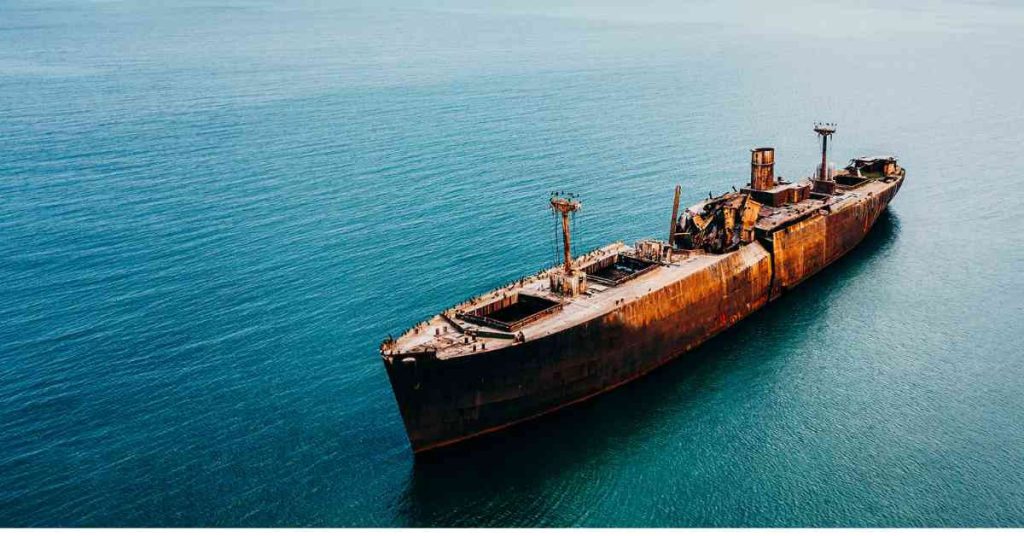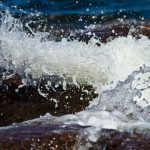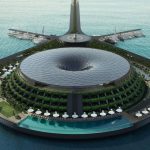Corrosion is a significant challenge in marine engineering, where metal structures and equipment are constantly exposed to harsh environments, including saltwater, humidity, and temperature fluctuations. Left unchecked, corrosion can weaken structural integrity, reduce equipment lifespan, and lead to costly repairs or catastrophic failures. Effective corrosion protection is essential to ensure the safety, reliability, and longevity of marine vessels, offshore platforms, and underwater infrastructure. In this article, we’ll explore the causes of corrosion, its effects, and the best methods for preventing it in marine environments.
1. Understanding Corrosion in Marine Engineering 🧠🌊
A. What Is Corrosion?
Corrosion is a chemical process that occurs when metals react with their environment, leading to the gradual deterioration of the material. In marine environments, saltwater accelerates this process due to its high conductivity and chloride content.
B. Types of Corrosion in Marine Environments
- Uniform Corrosion: Even degradation across the metal surface, typically caused by prolonged exposure to seawater.
- Galvanic Corrosion: Occurs when two dissimilar metals are in contact in a conductive environment, causing one metal to corrode faster.
- Pitting Corrosion: Localized corrosion that creates small holes or pits, often difficult to detect but highly damaging.
- Crevice Corrosion: Occurs in confined spaces where stagnant water accelerates corrosion, such as joints and welds.
- Stress Corrosion Cracking: Caused by the combined effects of stress and a corrosive environment, leading to cracks in the metal.
2. The Impact of Corrosion on Marine Engineering ⚠️
- Structural Integrity: Corrosion weakens metal structures, compromising the safety and stability of ships, offshore platforms, and underwater pipelines.
- Equipment Failure: Corrosion can damage critical components such as engines, propellers, and electrical systems, leading to malfunctions and downtime.
- Maintenance Costs: Repairing or replacing corroded parts is expensive and time-consuming, increasing operational costs.
- Environmental Risks: Corrosion-related failures, such as oil or chemical leaks, can have severe environmental consequences.
- Reduced Lifespan: Corrosion shortens the lifespan of marine assets, reducing their economic value and sustainability.
3. Importance of Corrosion Protection ✅
Protecting metal structures and equipment from corrosion is essential to ensure safety, reliability, and cost-effectiveness in marine engineering. Key benefits include:
- Enhanced Safety: Preventing corrosion reduces the risk of structural failure and equipment malfunctions, ensuring the safety of personnel and the environment.
- Prolonged Lifespan: Effective corrosion protection extends the lifespan of marine assets, reducing the need for frequent repairs and replacements.
- Cost Savings: By minimizing maintenance and repair costs, corrosion protection improves the economic efficiency of marine operations.
- Regulatory Compliance: Many maritime regulations require proper corrosion protection to ensure the safety and environmental sustainability of marine operations.
- Improved Performance: Corrosion-free equipment operates more efficiently, reducing energy consumption and improving overall performance.
4. Corrosion Protection Methods in Marine Engineering 🛡️
A. Protective Coatings 🎨
Applying protective coatings is one of the most effective ways to prevent corrosion. These coatings create a barrier that prevents moisture and oxygen from reaching the metal surface.
- Paints and Epoxy Coatings: Commonly used on ship hulls, decks, and offshore platforms to provide long-lasting protection.
- Anti-Fouling Coatings: Special coatings prevent the growth of marine organisms that can accelerate corrosion.
- Powder Coatings: Durable and resistant to harsh environments, often used for equipment and machinery.
B. Cathodic Protection ⚡
Cathodic protection is a technique that prevents metal corrosion by making the metal surface the cathode of an electrochemical cell. There are two main types:
- Sacrificial Anode Cathodic Protection (SACP): Involves attaching sacrificial anodes made of zinc, aluminum, or magnesium to the metal structure. These anodes corrode instead of the protected metal.
- Impressed Current Cathodic Protection (ICCP): Uses an external power source to supply a protective current to the metal structure, preventing corrosion.
C. Corrosion-Resistant Materials 🏗️
Using corrosion-resistant materials is essential in marine environments:
- Stainless Steel: Contains chromium, which forms a protective oxide layer that resists corrosion.
- Aluminum Alloys: Lightweight and corrosion-resistant, commonly used in shipbuilding and marine equipment.
- Copper-Nickel Alloys: Highly resistant to seawater corrosion, often used in piping and heat exchangers.
D. Environmental Control 🌱
Minimizing exposure to corrosive elements can help prevent corrosion:
- Dehumidification: Reducing humidity in enclosed spaces prevents moisture from accelerating corrosion.
- Sealing and Insulation: Sealing joints and insulating metal parts prevent water intrusion and reduce corrosion risk.
- Proper Drainage: Ensuring proper drainage of seawater prevents stagnant water from accelerating corrosion.
E. Regular Maintenance and Inspection 🔎
Routine maintenance and inspection are crucial for detecting and addressing corrosion before it causes significant damage:
- Visual Inspections: Regularly inspect metal surfaces for signs of rust, pitting, and discoloration.
- Ultrasonic Testing: Use ultrasonic equipment to detect internal corrosion and measure metal thickness.
- Protective Coating Maintenance: Reapply protective coatings as needed to maintain their effectiveness.
5. Corrosion Protection in Different Marine Applications 🌊🚢
A. Ships and Vessels 🛳️
- Hulls are coated with anti-fouling and anti-corrosion paints to prevent rust and biofouling.
- Internal components, such as engines and electrical systems, are protected with corrosion-resistant materials and coatings.
- Sacrificial anodes are used on hulls, propellers, and rudders to prevent galvanic corrosion.
B. Offshore Platforms 🛢️
- Structural steel components are coated with epoxy paints and protected with cathodic protection systems.
- Piping and equipment are made from corrosion-resistant alloys to withstand harsh marine environments.
- Regular inspections and maintenance ensure the long-term integrity of offshore platforms.
C. Underwater Pipelines 🧵
- Pipelines are coated with fusion-bonded epoxy (FBE) coatings to prevent corrosion.
- Cathodic protection systems, including sacrificial anodes and ICCP, provide additional protection.
- Pipeline joints are sealed to prevent water intrusion and reduce the risk of crevice corrosion.
D. Ports and Harbors ⚓
- Metal structures such as piers, docks, and mooring equipment are coated with protective paints and protected with cathodic protection systems.
- Regular maintenance ensures that corrosion does not compromise the safety and functionality of port infrastructure.
6. Regulations and Standards 📜
International regulations and standards ensure that marine structures and equipment are adequately protected against corrosion:
- International Maritime Organization (IMO): Sets standards for the construction, maintenance, and inspection of ships and offshore platforms.
- ISO 12944: International standard for corrosion protection of steel structures using protective coatings.
- NACE International: Provides guidelines for corrosion control, including cathodic protection and material selection.
- Classification Societies (ABS, Lloyd’s Register, DNV): Ensure compliance with corrosion protection standards during shipbuilding and maintenance.
7. Challenges and Innovations in Corrosion Protection 🚀
A. Challenges:
- Harsh marine environments accelerate corrosion, requiring durable and long-lasting protection methods.
- Maintenance and repairs in offshore locations are expensive and challenging.
- Environmental regulations limit the use of certain protective coatings, requiring eco-friendly alternatives.
B. Innovations:
- Smart Coatings: Self-healing coatings that repair minor damage, extending the lifespan of protective layers.
- Nanotechnology: Nano-coatings with enhanced corrosion resistance and reduced environmental impact.
- Advanced Cathodic Protection: Automated ICCP systems that adjust current levels based on environmental conditions.
- Eco-Friendly Anti-Fouling Coatings: Biodegradable coatings that prevent biofouling without harming marine life.
8. Conclusion ✅
Corrosion protection is essential for the safety, reliability, and longevity of marine engineering structures and equipment. By understanding the causes and effects of corrosion, engineers can implement effective protection methods, including protective coatings, cathodic protection, and corrosion-resistant materials. Regular maintenance and compliance with international standards ensure that marine assets remain safe and functional, reducing maintenance costs and preventing environmental damage. As technology advances, innovative solutions such as smart coatings and nanotechnology will further enhance corrosion protection, ensuring a sustainable and efficient future for the marine industry.


